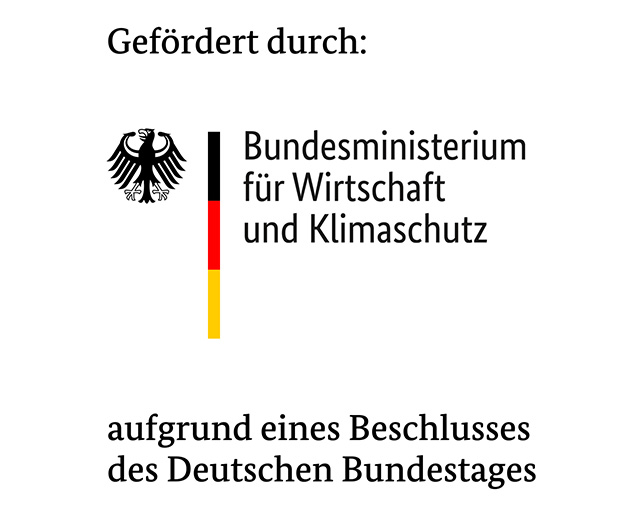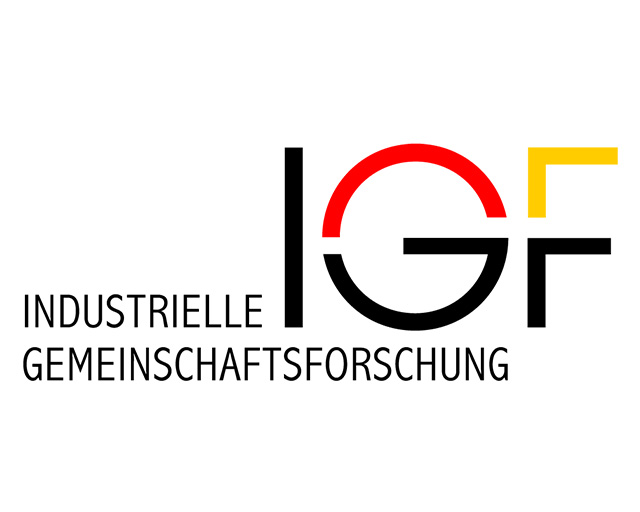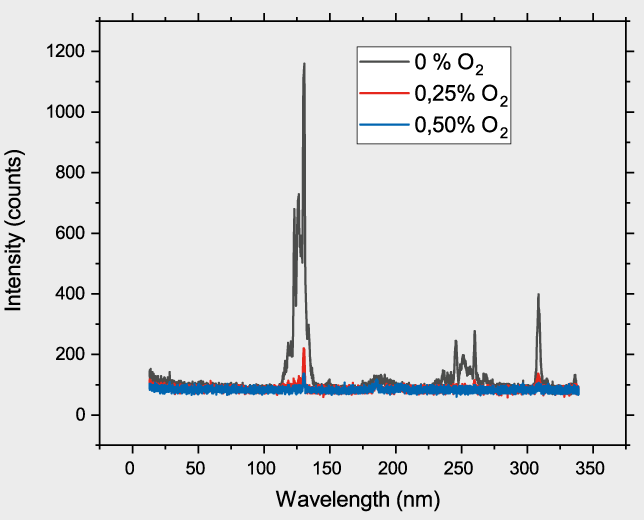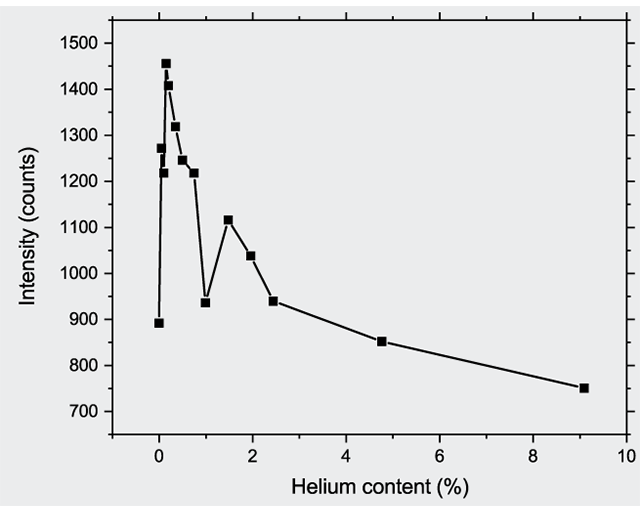
Investigation of VUV-radiation in dielectric barrier discharge processes

Vacuum ultraviolet (VUV) radiation, which covers the spectral range from 100 to 200 nm, is extremely energy-rich and can break organic bonds. This property can be used, amongst other things, to crosslink polymer surfaces and thereby create migration barriers for harmful phthalate-containing plasticizers in PVC. A special VUV spectrometer is used at the Fraunhofer IST in order to characterize and optimize such processes.

Investigation of VUV radiation in atmospheric-pressure plasma processes
Through dielectric barrier discharges (DBD) at atmospheric pressure, VUV radiation can be effectively generated (see Figure above). DBD treatment is therefore suitable for the production of migration barriers on polymer surfaces. In order to optimize this process, VUV radiation was measured at the Fraunhofer IST within the framework of the project “Vernetzung von weichmacherhaltigen PVC-Oberflächen durch plasmaerzeugte UV-Strahlung und Gasphasenfluorierung” (Crosslinking of plasticizer-containing PVC surfaces by means of plasma-generated UV radiation and gas-phase fluorination) using a special VUV spectrometer which enables the analysis of short-wave UV radiation in the range from 100 to 300 nm in atmospheric-pressure plasma processes. In this way, the influence of various DBD process parameters (such as gas composition, power, and purge duration) on VUV emissions – and, consequently, on the creation of migration barriers – can be investigated.
A major challenge in the measurement of VUV radiation is the strong absorption by most media such as air, water, glass and polymers. For this reason, both the spectrometer itself and the entire experimental setup used to generate the radiation must be purged with a suitable gas – in this case, argon. VUV radiation was generated in a simple DBD configuration and the influence of the composition of the gas atmosphere on the emission was investigated. Minimal admixtures in the range of 0.1 % oxygen, nitrogen or water to the argon process gas lead to an almost complete absorption of shortwave UV radiation below 200 nm (see the Figure below on the left). Through the addition of helium to the argon, the VUV intensity is increased by 50 percent (see the Figure below on the right). The composition of the gas atmosphere therefore strongly influences the short-wave UV emission. Through the higher VUV intensity, process speeds of UV-based treatments can be increased and energetic efficiencies can be improved.
Outlook
The possibilities at the Fraunhofer IST for the spectroscopic analysis of short-wave UV radiation in the range from 100 nm to 300 nm in atmospheric-pressure plasma processes offer an important prerequisite for an improved understanding of plasma-based processes and their optimization. The aim is to utilize this to accelerate the process speeds of, in particular, the UV-radiation-based effects of surface treatment – such as crosslinking, polymerization or disinfection – in order to enable their industrial application.
The project
The project was funded under grant number 20542 BG within the framework of the program for the promotion of joint industrial research (IGF) by the German Federal Ministry for Economic Affairs and Energy on the basis of a resolution of the German Bundestag.


This article is part of the annual report 2020.

